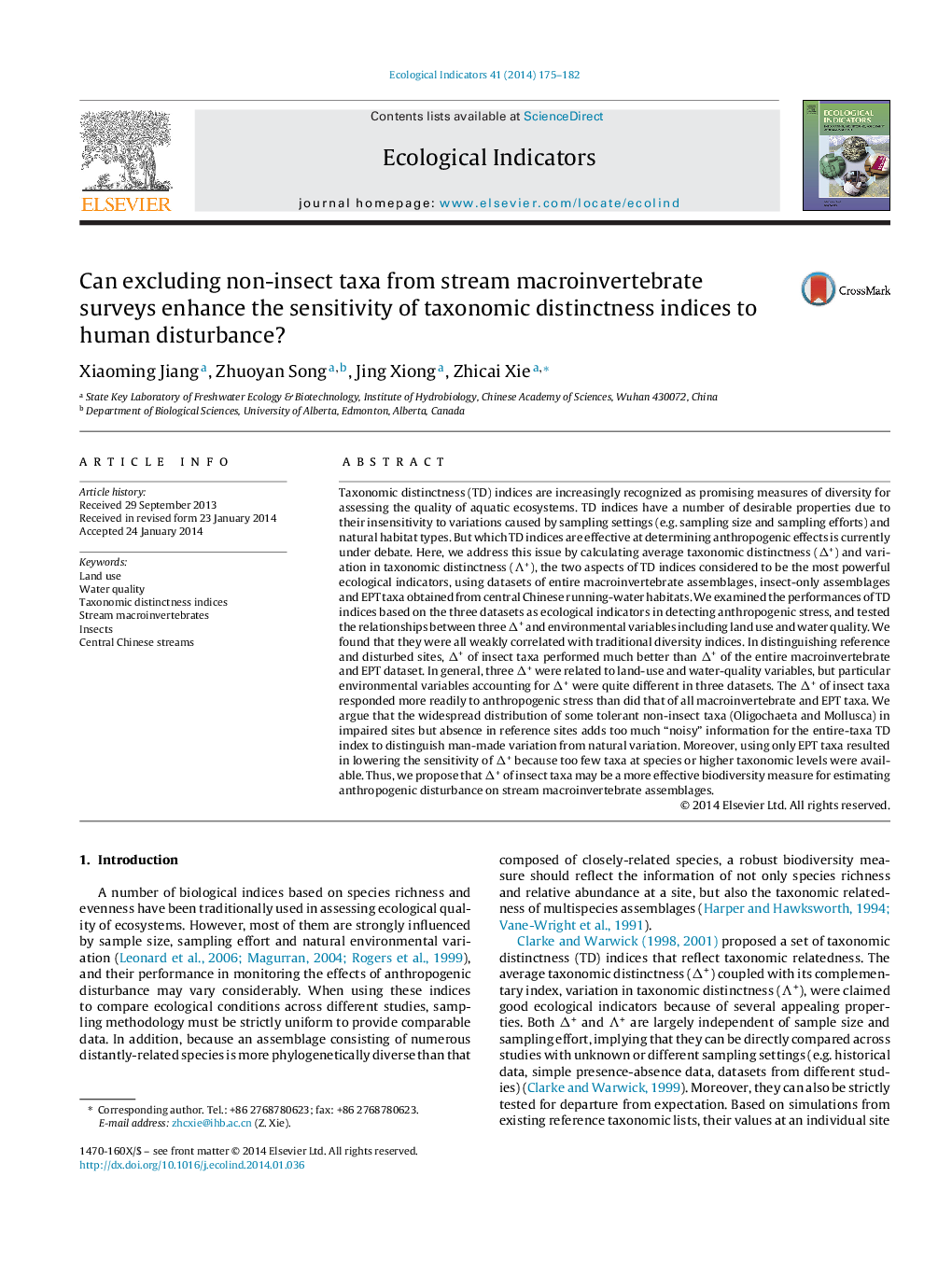| Article ID | Journal | Published Year | Pages | File Type |
|---|---|---|---|---|
| 4373206 | Ecological Indicators | 2014 | 8 Pages |
•We test the sensitivity of taxonomic distinctness (TD) indices to human disturbance using both entire stream macroinvertebrate and insect-only assemblages.•We employed Δ+ and Λ+ to test their response in detecting stress in different levels.•The Δ+ of insect taxa responded more readily to anthropogenic stress than did that of all taxa.•Tolerant non-insect taxa add “noisy” information for the sensitivity of entire-taxa TD indices.
Taxonomic distinctness (TD) indices are increasingly recognized as promising measures of diversity for assessing the quality of aquatic ecosystems. TD indices have a number of desirable properties due to their insensitivity to variations caused by sampling settings (e.g. sampling size and sampling efforts) and natural habitat types. But which TD indices are effective at determining anthropogenic effects is currently under debate. Here, we address this issue by calculating average taxonomic distinctness (Δ+) and variation in taxonomic distinctness (Λ+), the two aspects of TD indices considered to be the most powerful ecological indicators, using datasets of entire macroinvertebrate assemblages, insect-only assemblages and EPT taxa obtained from central Chinese running-water habitats. We examined the performances of TD indices based on the three datasets as ecological indicators in detecting anthropogenic stress, and tested the relationships between three Δ+ and environmental variables including land use and water quality. We found that they were all weakly correlated with traditional diversity indices. In distinguishing reference and disturbed sites, Δ+ of insect taxa performed much better than Δ+ of the entire macroinvertebrate and EPT dataset. In general, three Δ+ were related to land-use and water-quality variables, but particular environmental variables accounting for Δ+ were quite different in three datasets. The Δ+ of insect taxa responded more readily to anthropogenic stress than did that of all macroinvertebrate and EPT taxa. We argue that the widespread distribution of some tolerant non-insect taxa (Oligochaeta and Mollusca) in impaired sites but absence in reference sites adds too much “noisy” information for the entire-taxa TD index to distinguish man-made variation from natural variation. Moreover, using only EPT taxa resulted in lowering the sensitivity of Δ+ because too few taxa at species or higher taxonomic levels were available. Thus, we propose that Δ+ of insect taxa may be a more effective biodiversity measure for estimating anthropogenic disturbance on stream macroinvertebrate assemblages.
